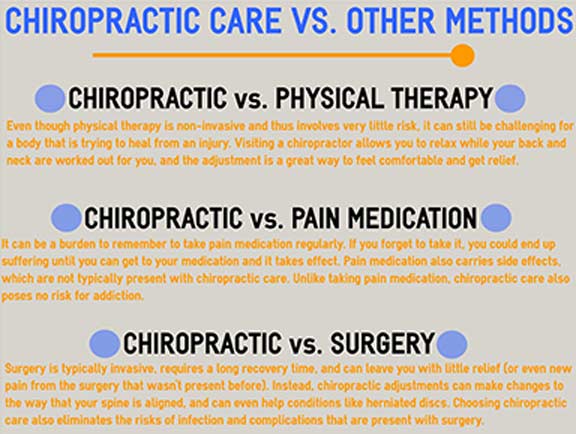Daily Practices That Lead To Pain In The Back And Techniques For Avoidance
Daily Practices That Lead To Pain In The Back And Techniques For Avoidance
Blog Article
Material By-Bates Baxter
Maintaining correct pose and preventing typical challenges in everyday tasks can substantially impact your back health. From how you sit at your desk to how you lift heavy objects, small adjustments can make a big difference. Think of a day without the nagging pain in the back that prevents your every action; the solution could be less complex than you believe. By making a few tweaks to your everyday habits, you could be on your means to a pain-free presence.
Poor Posture and Sedentary Way Of Living
Poor stance and an inactive way of life are 2 major factors to back pain. When holistic doctor austin tx slouch or suspicion over while sitting or standing, you put unneeded stress on your back muscles and back. This can bring about muscular tissue discrepancies, stress, and eventually, chronic neck and back pain. Furthermore, sitting for long periods without breaks or exercise can weaken your back muscle mass and cause stiffness and discomfort.
To combat visit the up coming document , make an aware initiative to sit and stand right with your shoulders back and lined up with your ears. Remember to maintain your feet level on the ground and stay clear of crossing your legs for extended periods.
Including normal stretching and enhancing exercises into your day-to-day routine can likewise help boost your pose and ease neck and back pain associated with an inactive way of life.
Incorrect Training Techniques
Inappropriate training techniques can dramatically contribute to pain in the back and injuries. When you lift hefty objects, remember to bend your knees and utilize your legs to lift, instead of depending on your back muscles. Avoid twisting your body while training and keep the object close to your body to lower stress on your back. It's crucial to preserve a straight back and avoid rounding your shoulders while lifting to avoid unneeded stress on your spine.
Always assess the weight of the item prior to raising it. If it's too hefty, ask for help or usage tools like a dolly or cart to transfer it securely.
Bear in mind to take breaks throughout lifting tasks to give your back muscular tissues a chance to rest and protect against overexertion. By carrying out appropriate training techniques, you can avoid back pain and decrease the danger of injuries, guaranteeing your back remains healthy and balanced and solid for the long-term.
Lack of Regular Workout and Extending
A less active way of living without normal workout and stretching can considerably contribute to back pain and discomfort. When you don't engage in exercise, your muscular tissues end up being weak and stringent, leading to poor pose and raised pressure on your back. Routine exercise assists enhance the muscle mass that support your back, improving security and decreasing the danger of neck and back pain. Integrating stretching into your routine can also boost versatility, avoiding stiffness and discomfort in your back muscular tissues.
To stay clear of pain in the back triggered by an absence of exercise and extending, go for a minimum of 30 minutes of modest exercise most days of the week. Include exercises that target your core muscle mass, as a solid core can help minimize pressure on your back.
Furthermore, take breaks to stretch and relocate throughout the day, particularly if you have a workdesk task. Simple stretches like touching your toes or doing shoulder rolls can assist ease stress and prevent pain in the back. Focusing on regular workout and stretching can go a long way in preserving a healthy and balanced back and decreasing discomfort.
Conclusion
So, remember to sit up straight, lift with your legs, and remain energetic to stop neck and back pain. By making easy changes to your daily habits, you can prevent the discomfort and restrictions that feature pain in the back. Care for your spine and muscular tissues by practicing excellent position, correct lifting techniques, and routine exercise. Your back will thank you for it!
